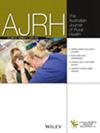Medical Students' and Supervisors' Experiences of Extracurricular Research at a Rural Clinical School: A Mixed-Methods Study
Abstract
Objective
The purpose of this study was to explore student and supervisor experiences of medical student research activity in a rural area, as well as reasons for interested students not engaging in research and projects being delayed or discontinued.
Setting
One university's rural clinical school programme encompassing four regional training locations.
Participants
Medical students completing their training at a rural location who expressed an interest in participating in extracurricular research, along with supervisors of extracurricular research projects for rural students within the preceding 2 years.
Design
Convergent mixed-methods study involving an online survey with students and semi-structured interviews with supervisors. Thematic analysis was used to analyse the interview data.
Results
Common student participation reasons (n = 14) included gaining new skills, strengthening their curriculum vitae, interest in a future research career, and supervisor encouragement; however, only eight projects were successfully continued thus far. Analysis of the interview data (10 supervisors) led to the creation of three themes and five sub-themes: advantageous partnerships (collegially co-designed, student benefits, and broader benefits), navigating research processes (time constraints and lengthy processes impacting workloads, and support needs), and setting students up for success.
Conclusions
Training or working in a rural area is associated with specific barriers and enablers for medical students participating in research and their supervisors. Time constraints for both students and supervisors were key barriers to project continuation, with successful projects usually having a clear finite timeframe. Targeted strategies specific to rural contexts are needed to maximise rates of project completion and publication.

 求助内容:
求助内容: 应助结果提醒方式:
应助结果提醒方式:


